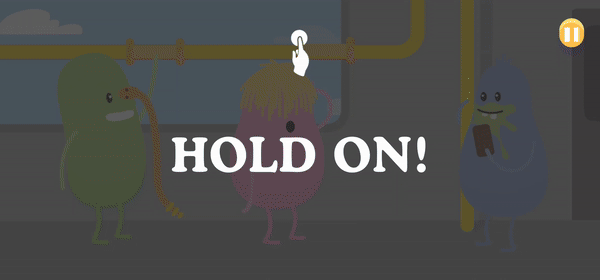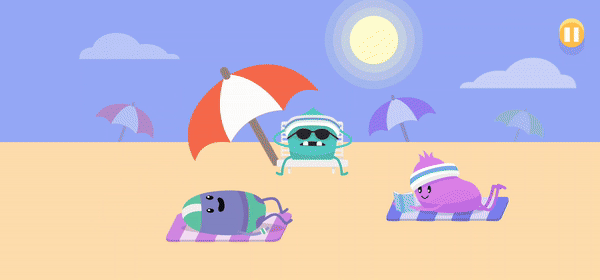Dumb Ways to Die 1 & 2
Responsibilities:
-
Pitching minigames to the wider team to align with the goals of our holiday-themed updates.
-
Iterating and balancing each minigame in engine to ensure a consistent difficulty curve.
-
Working closely with external clients to maintain brand consistency.


Case Study: Creating a 30-Second Game
Having worked on both Dumb Ways to Die and Dumb Ways to Die 2: The Games simultaneously, my input largely involved pitching and balancing minigames to be added in our limited-time holiday events. The primary challenge of the Dumb Ways titles is in creating minigames that can be taught, played and completed by the player in the spawn of only 30 seconds without them feeling unfair.
Taking place in a relatively grounded universe, I leaned heavily on real-world experiences and concepts that players would already understand to leverage the most from our 3 second instruction screen. Concepts like "Hold onto the safety rail" and "Rotate the dial to turn it off" have real-world counterparts that made it easy to tech players in the spur of the moment.

'Safety Rail Showdown' uses visual queues based on real-world trains and is easy to understand at a glance.

'Sunblock Shenanigan' places the Bean character front-and-center so that you have no choice but to interact with him and figure out the game's mechanic.
More complex mechanics and abstract concepts were far harder to tutorialise efficiently, relying instead on the strengths of the game's art style. By using clear visual language and distinct shapes and colours we could emphasize the interactive parts of a minigame at a glance, ensuring that players at least know what they can interact with and thereby figure the game out through trial-and-error.
Another goal l I set myself when designing minigames was in reducing UI where possible, overlaying directional arrows and meters are useful tools in teaching players but overall they detracted from each game's simple visuals, as such I tried to create minigames that use diegetic parts of the world to teach these actions instead.
By focusing on these simple visuals, diegetic UI and leaning into real world experiences I helped craft a numer of minigames that successfully avoid frustration in their short play-time.

